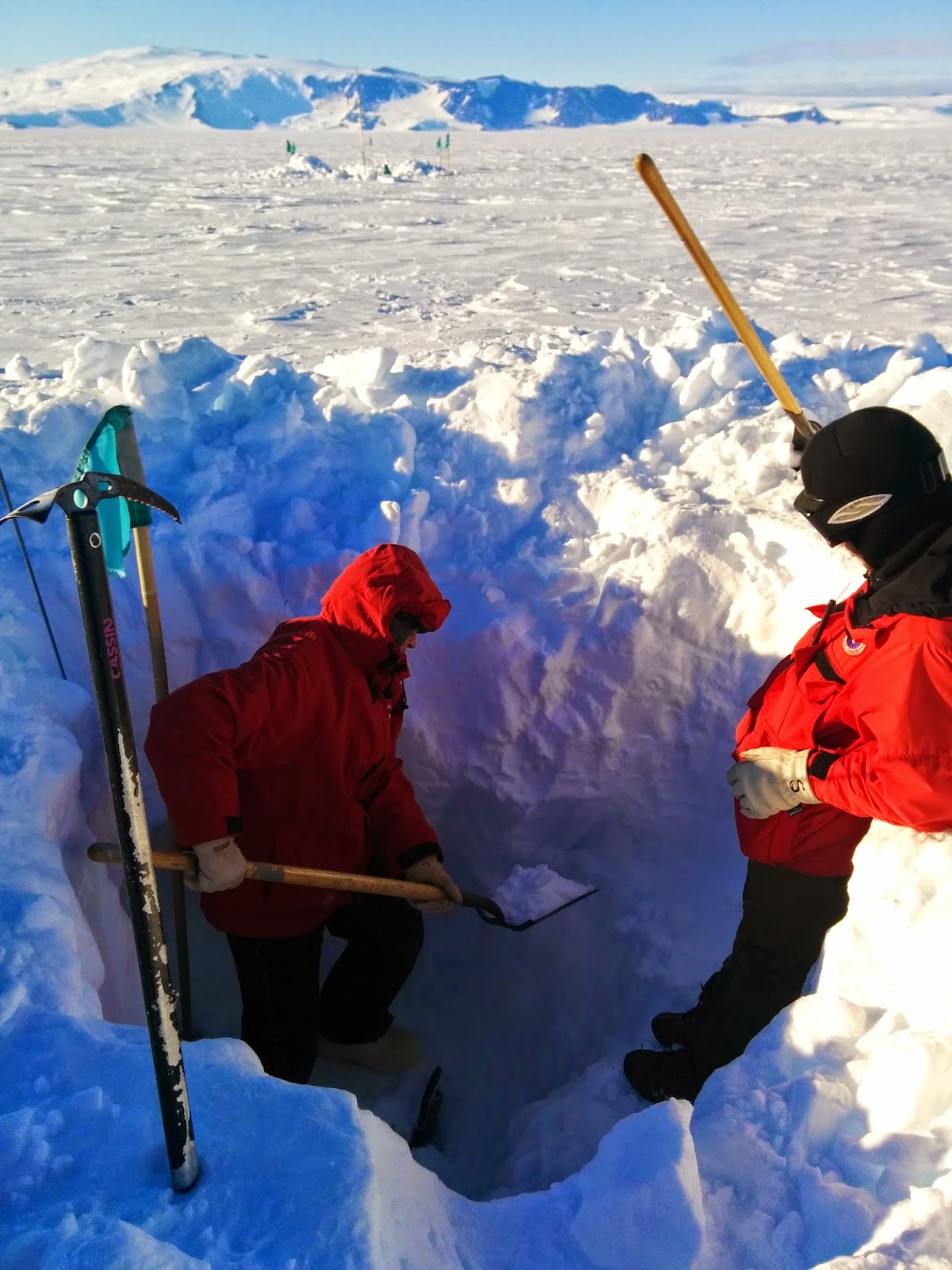Including a few stormy days that kept us in our tents, we
installed four new stations in about a week.
There were three stations already installed from previous years so
technically we were done with the hexagonal station array construction. However, given that we were ahead of
schedule, we decided to unbury two of the three pre-existing stations in order
to upgrade their hardware and conduct some performance studies. One of the stations was left completely
unhampered with it for a third consecutive season to continue studying long
term system performance. Then disaster
struck - we ran out of good coffee! For
an avid coffee drinker, like myself, this was a nightmare. The panic subsided after a desperate scramble
turned up a can of instant coffee stashed away in one of the food
boxes...phew...
Most of our remaining time on site was devoted to station
calibration and ice studies. Both
involved using a pulser, which generates a very short pulse, connected to a
LPDA that transmits the pulse. For the
station calibrations, the stations' own antennas and electronics were used to
digitize the transmitted pulse. We
managed to collect a large amount of station calibration data for a multitude
of different transmitting antenna locations and tine orientations relative to
the configuration of the stations' receiving antennas. Since the received signal was fully
propagated through the full electronics chain, as a neutrino signal would,
these calibration studies will ultimately help quantify how well we can
reconstruct the point in the sky the neutrino arrived from.
ARIANNA is in Antarctica because it needs vast amounts of
high quality ice to act as a neutrino target and signal propagation
medium. When using the ice nature has
pre-made, we are in a sense stuck with what we've got. We can't change the ice properties, so have
to fully understand them in order to accurately predict the shape of the
neutrino signal we should expect. That
is the main purpose of the ice studies.
The idea is simple. We transmit a
well understood and reproducible pulse (with pulser and a LPDA) and study what
we receive (with an oscilloscope and another LPDA). The received signal has propagated down
through the ice-sheet, reflected off the ice-water interface and then gone back
up to the surface. Thus, if we
deconvolve the effect of the electronics and antenna from the received signal,
any differences with the transmitted signal are due to properties of the
ice. To study the uniformity of the ice
properties in the vicinity of the stations we repeated the same procedure of
transmitting and receiving the signal but changed the location. Then the received signals at the different
locations can be compared and contrasted to look for ice difference. Since we made the setup portable, we were
able to move it at a number of different random locations away from camp. These studies will confirm previous ice
measurements establish the degree of uniformity of the properties of the ice at
the ARIANNA site.
With our hard drives full of interesting data and the
stations running great, it was time to break down camp and get back to McMurdo
to take a hot shower that we had all felt desperate for. Two days before our scheduled helo pick-up, a
wolfer flew in to help us take the camp down.
With her help we made a berm of wooden crates full of equipment that is
wintering over. Everything was cleaned,
packed and ready for the day of our departure, except our personal sleep
tents. On the day of the flight we took
down the personal tents in time for a 3pm departure. Unfortunately, the helo that was supposed to
pick us up had mechanical issues and was grounded for the day. That caused the helo schedule to fall
behind. We ended up being picked up
around 9pm. Luckily, that day was almost
windless and sunny so spending the time outside wasn't a problem. It was a good opportunity to reflect on our
season, enjoy the scenic Transantarctic Mountains, and take lots of pictures.
Many showers later, all of our stations are running great, and sending
high-quality data we are in the process of analyzing. The race to get
ready for the next season has started and preparations for the 2015-2016
season are well on their way. While preparing for another deployment,
we are also hard at work analyzing data and summarizing physics results
from the data we collected in a number of papers the ARIANNA
collaboration will publish in the not so distant future, so stay tuned!









